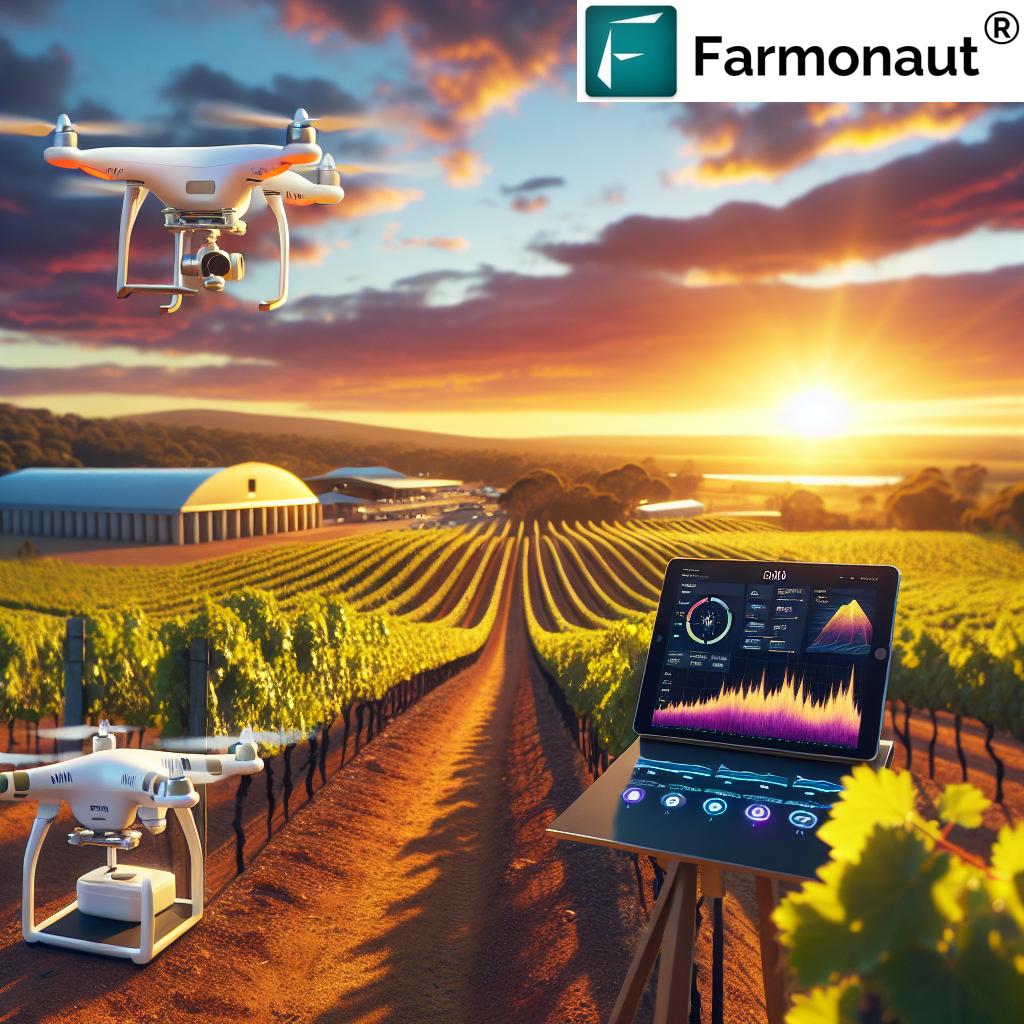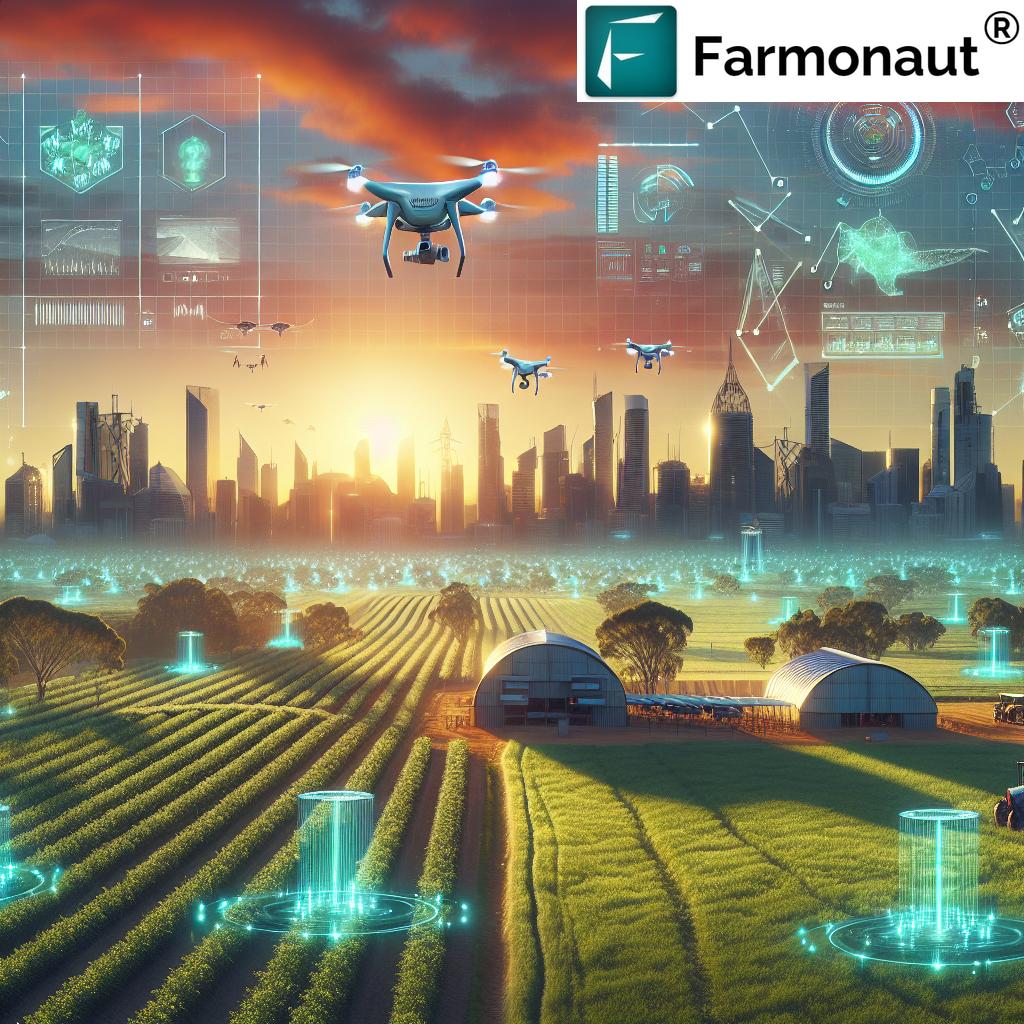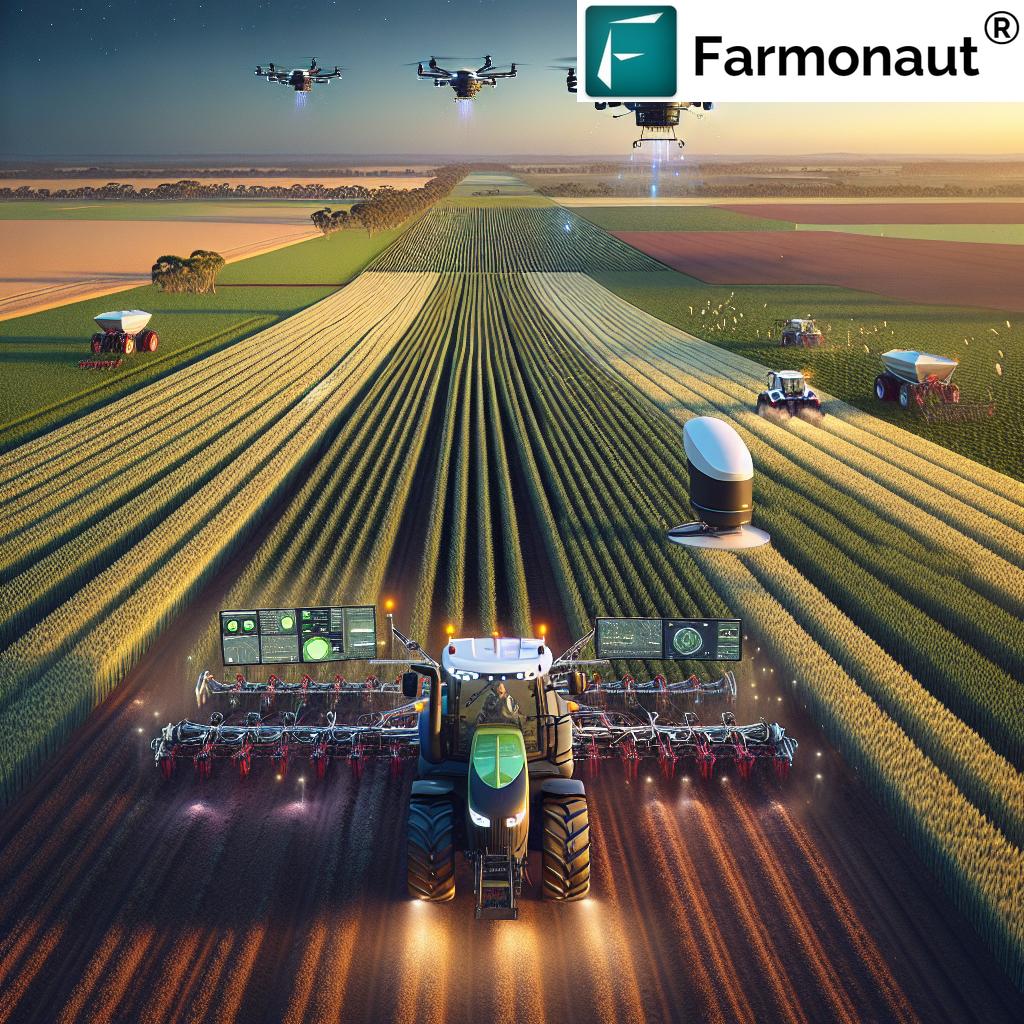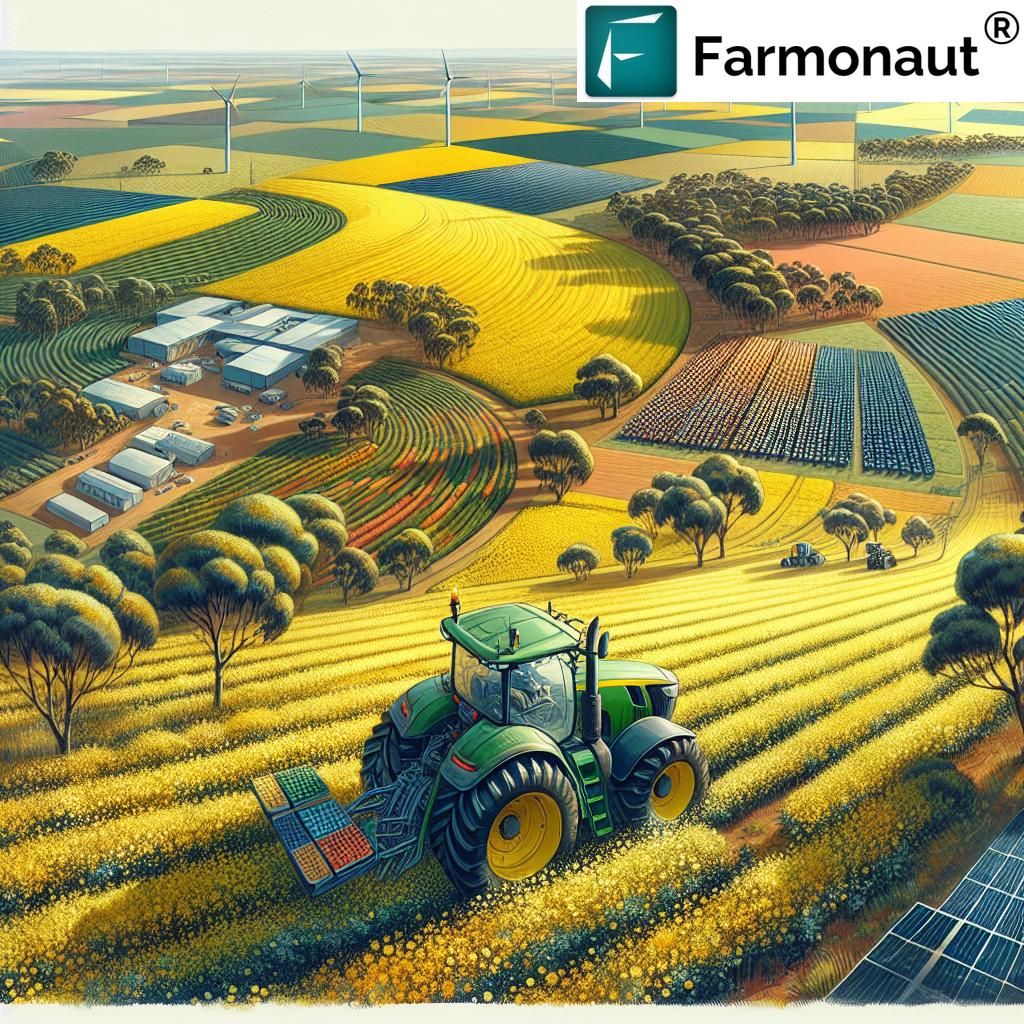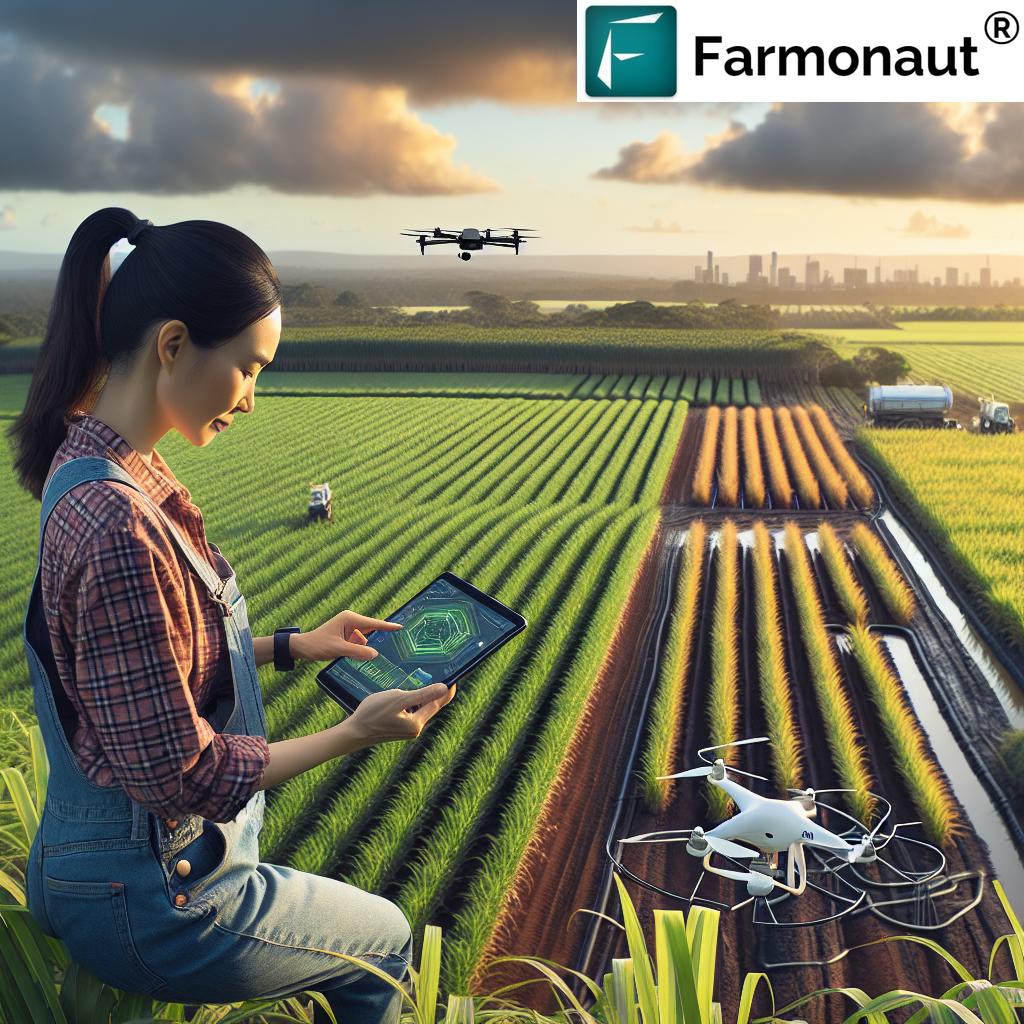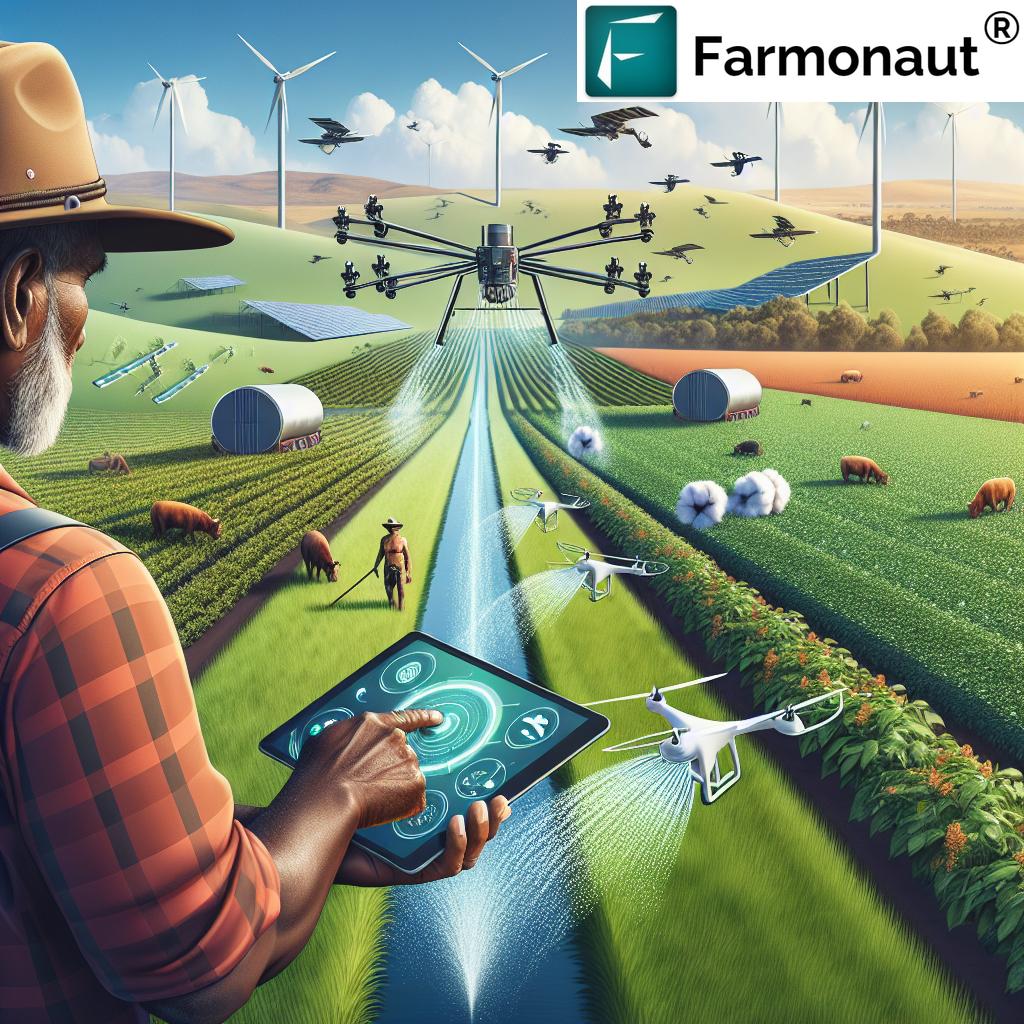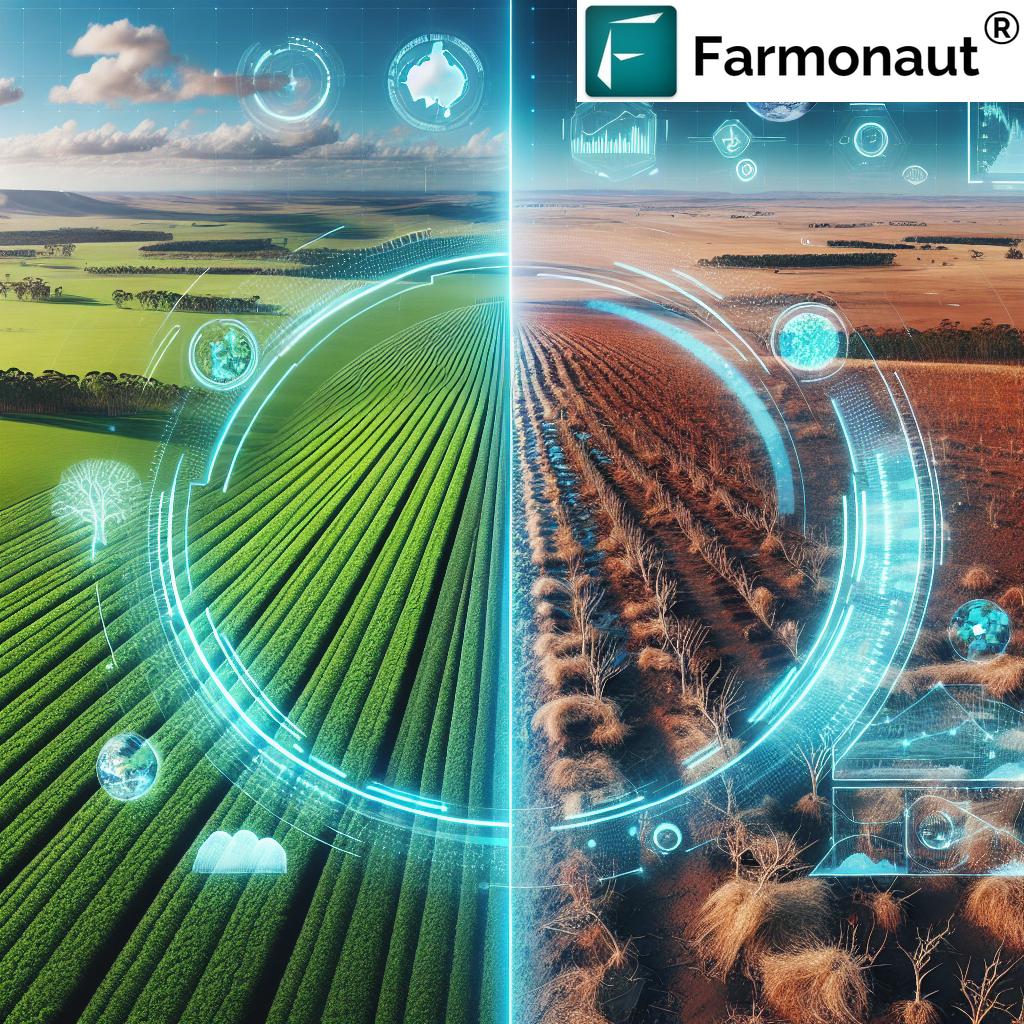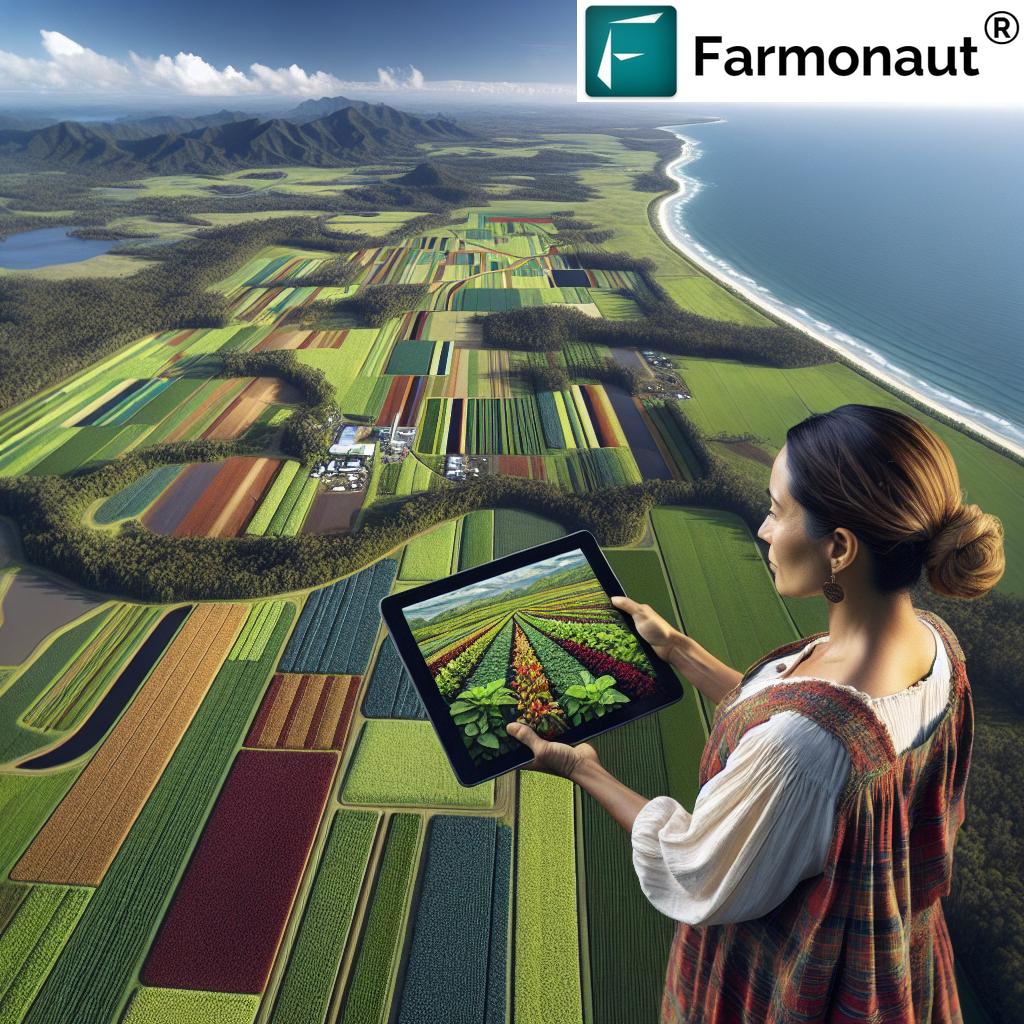Revolutionizing Australian Agriculture: Seaweed Farming’s Potential for Sustainable Livestock Feed and Rural Growth
“Asparagopsis taxiformis seaweed can reduce methane emissions in cattle by up to 80% when used as feed.”
In the ever-evolving landscape of sustainable agriculture technologies, Australia is pioneering a revolutionary approach that’s set to transform the way we think about livestock feed and rural development. At the heart of this innovation lies an unexpected hero: seaweed. As we delve into the exciting world of seaweed farming in Australia, we’ll uncover how this emerging industry is not only addressing environmental concerns but also creating a ripple effect of opportunities across the agricultural sector.
Our journey through this blog will explore the groundbreaking potential of seaweed, particularly the species Asparagopsis taxiformis, as an innovative livestock feed alternative. We’ll examine how this marine marvel is poised to revolutionize sustainable fodder production, contribute to rural workforce development, and open up new avenues in marine aquaculture. Join us as we navigate through the latest agricultural research programs, emerging agritech industries, and the economic implications of this burgeoning sector.
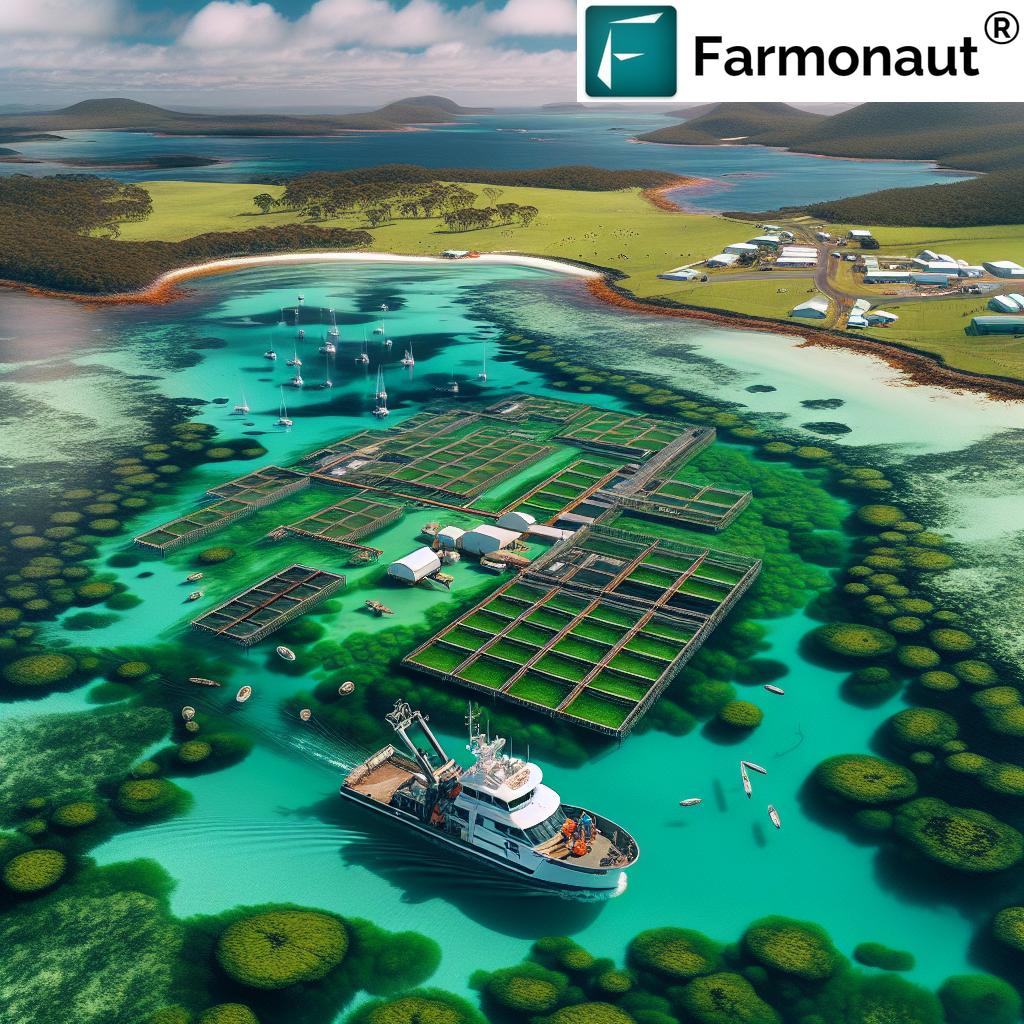
The Rise of Seaweed Farming in Australia
Australia, with its vast coastline and optimal growing conditions, is perfectly positioned to become a global leader in seaweed cultivation. The country’s commitment to agricultural innovation has paved the way for the exploration of seaweed as a sustainable resource with multifaceted applications. Let’s dive into the factors driving this exciting development:
- Environmental benefits: Seaweed farming requires no freshwater, fertilizers, or arable land, making it an exceptionally sustainable form of agriculture.
- Economic potential: The Australian seaweed industry is projected to contribute significantly to the national economy, with estimates suggesting a value of $1.5 billion by 2040.
- Diversification of rural economies: Seaweed farming offers new opportunities for coastal communities, fostering job creation and economic growth in regional areas.
As we explore the potential of seaweed farming, it’s crucial to understand the role of technology in modern agriculture. Platforms like  are at the forefront of agricultural innovation, providing farmers with valuable insights through satellite-based monitoring and AI-driven analytics.
are at the forefront of agricultural innovation, providing farmers with valuable insights through satellite-based monitoring and AI-driven analytics.
Asparagopsis taxiformis: The Game-Changer in Livestock Feed
At the center of Australia’s seaweed revolution is Asparagopsis taxiformis, a species that has shown remarkable potential as a livestock feed alternative. This particular seaweed has garnered attention for its ability to significantly reduce methane emissions in ruminant animals when added to their diet. Here’s why it’s making waves in the agricultural community:
- Methane reduction: Studies have shown that including Asparagopsis in cattle feed can reduce methane emissions by up to 80%.
- Nutritional value: Rich in essential nutrients, this seaweed can complement traditional feed to improve overall animal health.
- Sustainable production: Asparagopsis can be cultivated with minimal environmental impact, aligning with Australia’s commitment to sustainable farming practices.
The potential of Asparagopsis as a feed additive is not just an environmental win; it’s also opening up new markets and opportunities within the emerging agritech industries. As research continues, we’re likely to see increased investment in seaweed cultivation and processing technologies.
AgriFutures Australia: Spearheading Seaweed Research
AgriFutures Australia has taken a leading role in investigating the potential of seaweed as a sustainable fodder option. Their comprehensive research program is focusing on several key areas:
- Nutritional analysis: Determining the optimal nutritional profile of seaweed species for livestock feed.
- Processing methods: Developing efficient techniques for harvesting, drying, and incorporating seaweed into existing feed systems.
- Scalability: Assessing the feasibility of large-scale seaweed farming and its integration into Australian agriculture.
- Economic viability: Analyzing the cost-effectiveness of seaweed as a feed alternative compared to traditional options.
This research is crucial in establishing the foundation for a thriving seaweed industry in Australia. It’s paving the way for innovative agricultural practices that could revolutionize livestock management and contribute to the country’s efforts in reducing greenhouse gas emissions.
“Australia’s seaweed industry is projected to be worth $1.5 billion by 2040, creating numerous rural job opportunities.”
Marine Aquaculture: A New Frontier in Australian Agriculture
The growth of seaweed farming is opening up exciting prospects in marine aquaculture, an area with immense potential for Australia’s agricultural sector. This emerging field offers several advantages:
- Sustainable resource use: Marine aquaculture utilizes ocean resources without competing for land or freshwater.
- Ecosystem benefits: Seaweed farms can act as carbon sinks and provide habitats for marine life.
- Diversification: It offers farmers and coastal communities new avenues for income and economic growth.
As we explore these opportunities, it’s important to leverage advanced agricultural technologies. For instance,  provides valuable insights for land-based farming, and similar technologies are being developed for marine environments.
provides valuable insights for land-based farming, and similar technologies are being developed for marine environments.
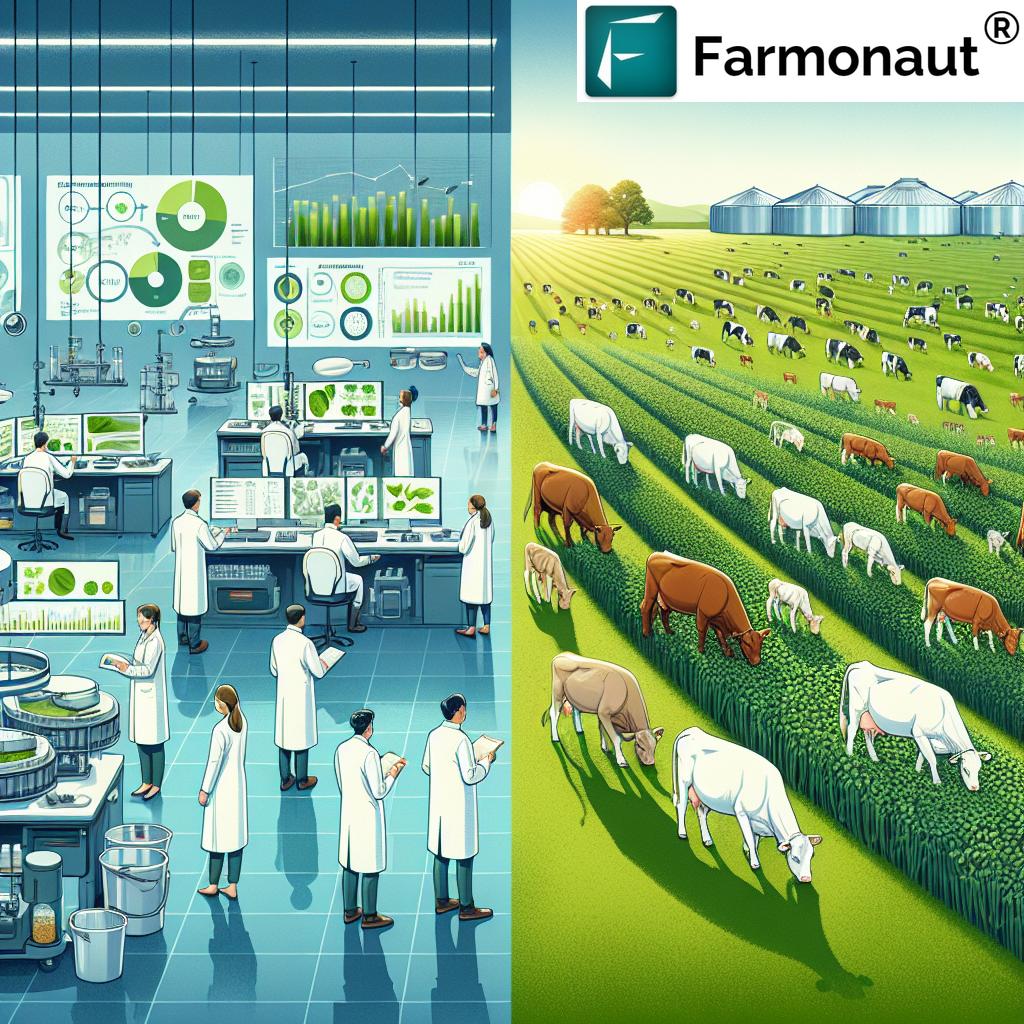
Rural Workforce Development and Economic Growth
The emergence of seaweed farming and related industries is set to have a profound impact on rural workforce development in Australia. This new sector is creating diverse job opportunities, from cultivation and harvesting to processing and research. Key aspects include:
- Job creation: New roles in seaweed farming, processing, and related research fields.
- Skill development: Training programs to equip workers with the necessary skills for this emerging industry.
- Economic diversification: Reducing reliance on traditional agricultural sectors and fostering resilience in rural economies.
The growth of the seaweed industry is not just about creating jobs; it’s about fostering innovation and entrepreneurship in rural areas. This aligns with broader efforts to revitalize regional communities and create sustainable, future-proof industries.
Sustainable Fodder Production: A New Paradigm
Sustainable fodder production is at the heart of the seaweed farming revolution in Australia. This innovative approach to livestock feed offers numerous benefits:
- Reduced environmental impact: Seaweed cultivation requires minimal inputs and can even help improve water quality.
- Climate change mitigation: By reducing methane emissions from livestock, seaweed feed contributes to Australia’s climate goals.
- Resource efficiency: Seaweed farming maximizes productivity in marine environments, complementing land-based agriculture.
The shift towards sustainable fodder production is not just an environmental imperative; it’s also a smart economic move. As global markets increasingly demand sustainable products, Australian farmers adopting these practices will be well-positioned to meet this growing demand.
For farmers looking to optimize their operations, tools like  can provide valuable insights into crop health and resource management, complementing sustainable farming practices.
can provide valuable insights into crop health and resource management, complementing sustainable farming practices.
Economic Potential and Market Growth
The economic potential of seaweed farming in Australia is substantial. As the industry grows, we’re likely to see significant impacts across various sectors:
- Export opportunities: High-quality, sustainably produced seaweed products for global markets.
- Value-added products: Development of new products beyond livestock feed, such as food additives, pharmaceuticals, and cosmetics.
- Investment attraction: Increased interest from both domestic and international investors in Australian seaweed ventures.
The market for seaweed products is projected to grow rapidly, driven by increasing awareness of their benefits and the push for sustainable alternatives in various industries. This growth presents exciting opportunities for Australian agribusinesses and entrepreneurs.
Agribusiness Investment Strategies in Seaweed Farming
For those looking to invest in this emerging sector, several agribusiness investment strategies are worth considering:
- Direct farming operations: Investing in seaweed cultivation facilities and equipment.
- Processing and value-addition: Developing facilities for processing seaweed into various products.
- Research and development: Funding initiatives to improve cultivation techniques and develop new applications for seaweed.
- Technology integration: Investing in technologies that enhance seaweed farming efficiency and sustainability.
Successful investment in seaweed farming requires a thorough understanding of the industry’s unique challenges and opportunities. Investors should consider factors such as location, species selection, and market demand when developing their strategies.
Connecting Seaweed Farming with Other Emerging Industries
The seaweed farming industry in Australia doesn’t exist in isolation. It’s part of a broader ecosystem of emerging agricultural sectors that are reshaping the country’s rural landscape. Some interesting connections include:
- Industrial hemp: Both seaweed and hemp are versatile crops with applications in food, textiles, and biofuels.
- Insect farming: Like seaweed, insects are being explored as a sustainable protein source for animal feed.
- Precision agriculture: Technologies developed for land-based farming, such as those offered by Farmonaut, could be adapted for marine environments.
These connections highlight the potential for cross-industry collaboration and innovation, further driving Australia’s leadership in sustainable farming practices.
Challenges and Future Directions
While the potential of seaweed farming in Australia is immense, there are challenges to overcome:
- Regulatory framework: Developing appropriate regulations for this new industry.
- Infrastructure development: Building the necessary processing and distribution facilities.
- Market education: Raising awareness about the benefits of seaweed products among consumers and industry stakeholders.
- Environmental monitoring: Ensuring that large-scale seaweed farming doesn’t negatively impact marine ecosystems.
Addressing these challenges will require collaboration between government, industry, and research institutions. The future of seaweed farming in Australia looks bright, but it will depend on continued innovation and strategic development.
Comparison: Seaweed vs. Traditional Livestock Feed
| Feed Type | Estimated Methane Reduction (%) | Nutritional Value (scale 1-10) | Production Sustainability (scale 1-10) | Estimated Cost per Ton (AUD) | Potential Economic Impact (scale 1-10) |
|---|---|---|---|---|---|
| Asparagopsis taxiformis | Up to 80% | 8 | 9 | 1500-2000 | 9 |
| Traditional Grain Feed | 0% | 7 | 5 | 300-500 | 6 |
| Hay/Silage | 0% | 6 | 7 | 200-400 | 5 |
| Commercial Feed Pellets | 0-5% | 8 | 6 | 400-600 | 7 |
Conclusion: Australia’s Leadership in Sustainable Farming Practices
As we’ve explored throughout this blog, seaweed farming represents a significant leap forward in sustainable agriculture technologies. Australia’s commitment to innovation and sustainability positions it as a global leader in this emerging field. The potential benefits of seaweed farming extend far beyond livestock feed, promising to revolutionize rural economies, contribute to climate change mitigation, and open up new avenues for agricultural exports.
The journey ahead is exciting, with opportunities for farmers, researchers, entrepreneurs, and investors to contribute to this transformative movement in agriculture. As we continue to harness the power of seaweed and other innovative farming practices, we’re not just shaping the future of Australian agriculture – we’re setting a standard for sustainable food production worldwide.
For those looking to stay at the forefront of agricultural innovation, tools like Farmonaut’s satellite and weather API and comprehensive API developer documentation offer valuable resources for integrating cutting-edge technology into farming practices.
FAQ Section
- Q: What makes Asparagopsis taxiformis unique as a livestock feed?
A: Asparagopsis taxiformis is unique because it can reduce methane emissions in cattle by up to 80% when added to their diet, offering a significant environmental benefit while providing nutritional value. - Q: How does seaweed farming contribute to rural workforce development?
A: Seaweed farming creates new job opportunities in cultivation, processing, and research, fostering economic diversification and skill development in rural areas. - Q: What are the main challenges facing the seaweed farming industry in Australia?
A: Key challenges include developing appropriate regulatory frameworks, building necessary infrastructure, educating the market, and ensuring environmental sustainability of large-scale operations. - Q: How does seaweed farming compare to traditional agriculture in terms of sustainability?
A: Seaweed farming is generally more sustainable as it requires no freshwater, fertilizers, or arable land, and can even provide environmental benefits such as carbon sequestration and habitat creation. - Q: What role does technology play in the development of seaweed farming?
A: Technology is crucial for optimizing cultivation techniques, processing methods, and market analysis. Tools like satellite monitoring and AI-driven analytics, similar to those used in land-based farming, are being adapted for marine environments.


